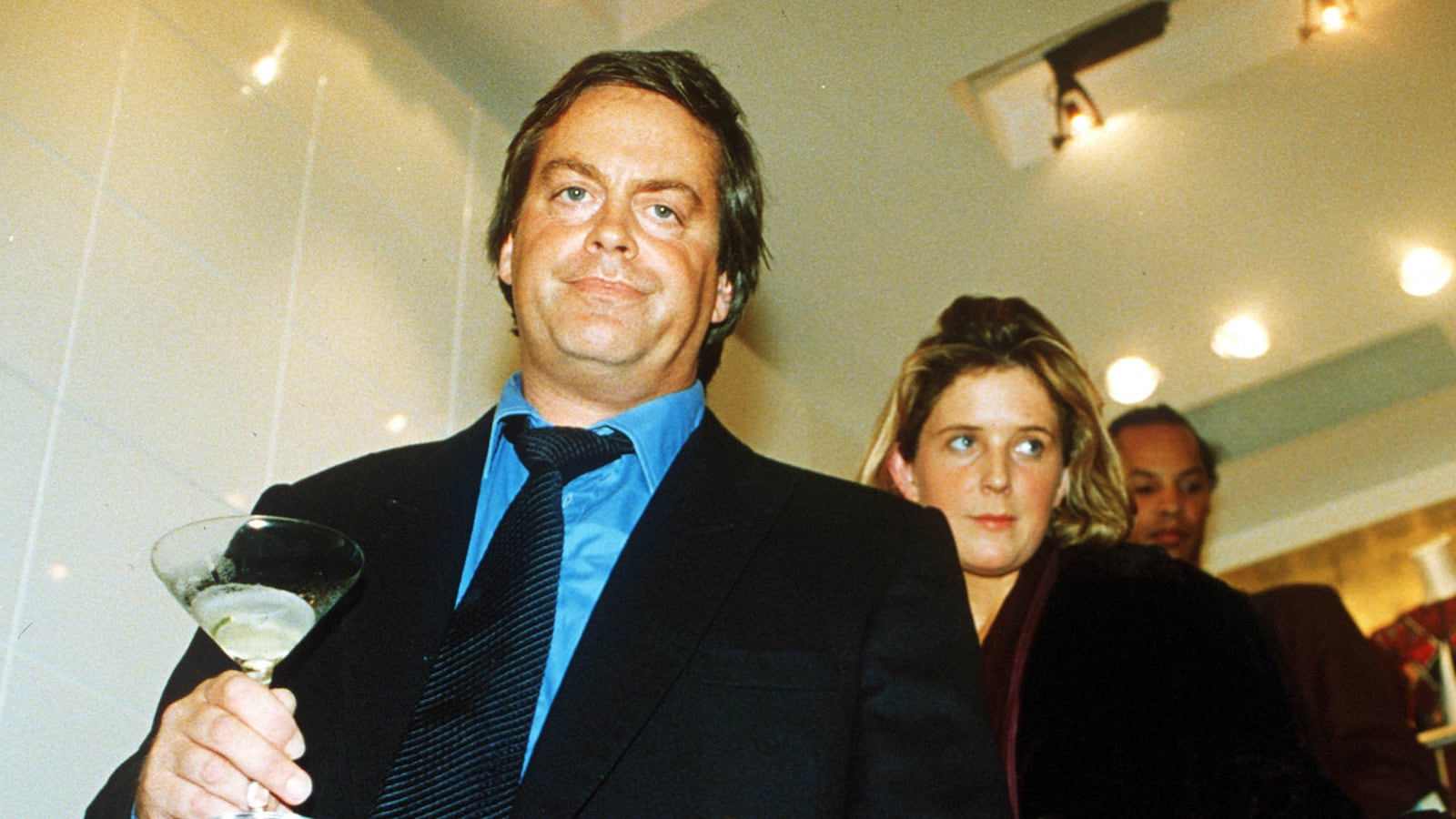Jamie Blandford, who has become the 12th Duke of Marlborough following the death of the 11th Duke at the age of 88, was once described by his father as the “black sheep” of the Spencer-Churchill family (British aristocrats have an unnerving habit of changing their name as they ascend the family tree), and with good reason.
Jamie has long been celebrated—or disdained, depending on one’s perspective—as one of the most riotous of British aristocrats. His Grace, as we must now address him, has more than 20 criminal convictions going back 30 years for offenses ranging from drug possession to burglary.
In 2007 he was jailed for six months for a road rage attack.
But even as far back as 1994, shortly after his first spell in chokey (for non-payment of maintenance to his first wife), things were going sufficiently badly that the 11th Duke took the unprecedented step of going to court to strip his son not only of his right to inherit the £100m Blenheim estate, but also the title.
He was thwarted only because the 1706 act of Parliament that gifted Blenheim to the 1st Duke of Marlborough forbade any intervention in the inheritance (the estate was, however, largely made over to a trust).
In recent years, Jamie has managed to give up drugs and, according to friends is a considerably calmer individual. There was even a rapprochement between him and his father before his death.
This makes Jamie a shining example among the history of wayward British aristocrats, where rehabilitation is rarer than a noisy fart in the drawing room.
Drugs were a major part of Jamie’s story, and they also played a significant role in the demise of his friend, heroin addict Charles Tennant, the disinherited son of Lord and Lady Glenconner (close friends of Princess Margaret) who died in 1996 at the age of 39.
In 1994 Charles was convicted of brandishing a shotgun at police officers at his home after drinking a bottle of vodka and three bottles of wine. He contracted Hepatitis C from drug use, which was a contributory factor in his death.
The Glenconner estate was made over to Henry, the second son, but he later died of an Aids-related illness, while the youngest son, Christopher, was brain-damaged in a motorcycle accident, leading to talk of a "curse" on the family.
But perhaps the most tragically compelling story of dissolution of recent years is that of another of Jamie Blandford’s friends, John Hervey, 7th Marquess of Bristol, who died in 1999 at the age of 44, after what the priest officiating at his funeral described appropriately enough as a "tumultuous journey" through life.
The Herveys had always been a law unto themselves—Lady Mary Wortley Montague observed back in the 1700s: “The world consists of men, women and Herveys”—but even by their standards, John was something else.
He inherited vast estates worth some £30m, all of which he sniffed, snorted and smoked away. When he died of multiple organ failure brought on by drug use, in a small rented cottage on the grounds of the magnificent Ickworth House, which he had effectively sold to the National Trust, he was worth just £5,000.
For a time John lived very high in every sense of the word, however. Not least among John’s extravagances was his helicopter. He would navigate from the cockpit using a road atlas—while snorting cocaine off the map. In 1988 he was jailed for seven months when police in Jersey found half an ounce of cocaine on board his chopper. The fire extinguisher, a friend of John’s once told me, had been emptied out and re-filled with vodka.
When the friend asked why, John replied, “Just in case.”
At one of his parties, in a private suite at the London hotel Claridge's, another friend recalled, “All the cocaine was on the left-hand side of the mantelpiece, and all the heroin was on the right. In lines. You took whichever one you liked.”
John was married, briefly, but he was sexually voracious. He claimed to have slept with over 2,000 rent boys.
John’s ruin of the family estates in tandem with the annihilation of his own life was tragic, but far from unique. The British aristocracy is littered with stories of unmitigated spendthrifts who seem bent on self-destruction.
Take William Pole Tylney Long Wellesley, the 4th Earl of Mornington, for example, whose wife Catherine was believed to be the richest commoner in England in the early 1800s. Her estates were said to be worth £40,000 per year in rents—millions in today’s values.
“Wicked William,” as he was known, made short work of her fortune. He hosted endless and extravagant parties at Wanstead House, his wife’s Palladian family home in Essex. When his uncle—the Duke of Wellington—defeated Napoleon at Waterloo, he threw a garden fete for 1,000 dignitaries, including the Prince Regent.
However, his habits proved so costly that by 1836, he was being taken to court by his son after he sold furniture and pictures belonging to him to cover a massive ₤3,000 debt.
He once embarked upon an affair with the wife of a Coldstream Guard--Catherine was appalled when news reached her that the lovers had been seen making love on the slopes of Mount Vesuvius. She contracted venereal disease from her husband, leading to her premature demise in 1825.
Mornington died in a rented room in London, on 1 July 1857, from heart disease. The obituary notice three days later in the Morning Chronicle claimed that he was, "A spendthrift, a profligate, and a gambler in his youth, he became debauched in his manhood... redeemed by no single virtue, adorned by no single grace, his life gone out even without a flicker of repentance."
John Wilmot, 2nd Earl of Rochester—whose life was played by Johnny Depp in the 2004 movie The Libertine—was another celebrated rake. He was said to have been "continually drunk for five years" at the court of Charles II in the 1670s. The poet died of syphilis aged 33 in 1680.
George William Thomas Brudenell-Bruce (1863-1894), 4th Marquis of Ailesbury, was such a habitual gambler that by the time he was 28 had debts of £345,462. The writer Christopher Simon Sykes (full disclosure--he’s my second cousin once removed) said in his book Black Sheep that “he chose deliberately to mix with blackguards, having found that in that class alone he was treated with deference."
My favorite bonkers story related by Christopher Sykes, however, concerns Lord Orford, the nephew of Horace Walpole, who organized a competition with Lord Rockingham in which five turkeys and five geese were raced to London from Norfolk. There was a £500 purse. History, sadly, does not relate which class of fowl won.
But even if Orford did win the turkey-geese derby, the winnings clearly didn’t do much to alleviate his money troubles; in 1778, to stave off bankruptcy, Orford sold his grandfather’s entire art collection to Catherine the Great. It now forms the core of the collection at the Hermitage.
We must all fervently hope that the history of the wayward sons of the aristocracy does not repeat itself--and that Jamie Blandford does not end up selling Blenheim Palace to Vladimir Putin.






